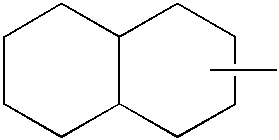Optical film
a technology of optical film and cellulose acetate, which is applied in the direction of magnetic materials for record carriers, instruments, polarising elements, etc., can solve the problems of difficult control of the phase difference wavelength dispersion of cellulose acetate film, difficult to obtain from a single polymer film a phase difference film, and difficult to maintain a phase difference and phase difference wavelength dispersion at practical levels for a long time. achieve the effect of small phase differen
- Summary
- Abstract
- Description
- Claims
- Application Information
AI Technical Summary
Benefits of technology
Problems solved by technology
Method used
Image
Examples
example 1
[0110]400 parts by weight of polystyrene (Mw=280,000) and 2,200 parts by weight of cyclohexane were charged into a stainless steel autoclave. They were stirred at 60° C. for 2 hours to prepare a polymer solution, and 700 parts by weight of methyl t-butyl ether and 80 parts by weight of a Ni / silica.alumina catalyst (65 wt % of Ni carried) were added to the solution to carry out a hydrogenation reaction at a hydrogen pressure of 100 kg / cm2 and a temperature of 180° C. for 5 hours. After the temperature was returned to room temperature and the inside of the autoclave was fully substituted with nitrogen, the solution was taken out from the autoclave and filtered under pressure using a membrane filter having a pore diameter of 0.1 μm (Fluoropore of Sumitomo Electric Industries, Ltd.) to obtain an achromatic transparent polymer solution. Sumirizer GS (of Sumitomo Chemical Co., Ltd.) was added as a stabilizer in an amount of 0.3 wt % based on the polymer, and the solvent was distilled off ...
example 2
[0113]An unstretched film obtained in the same manner as in Example 1 was stretched to 3 times in a uniaxial direction at 145° C. to obtain an oriented film. The thickness, phase difference (retardation) at 550 nm, R(450) / R(550), R(650) / R(550), total light transmission and water absorption of the oriented film are shown in Table 1.
example 3
[0114]An unstretched film obtained in the same manner as in Example 1 was stretched to 3 times in a uniaxial direction at 170° C. to obtain an oriented film. The thickness, phase difference (retardation) at 550 nm, R(450) / R(550), R(650) / R(550), total light transmission and water absorption of the oriented film are shown in Table 1.
PUM
| Property | Measurement | Unit |
|---|---|---|
| wavelength | aaaaa | aaaaa |
| wavelength | aaaaa | aaaaa |
| elongation | aaaaa | aaaaa |
Abstract
Description
Claims
Application Information
 Login to View More
Login to View More - R&D
- Intellectual Property
- Life Sciences
- Materials
- Tech Scout
- Unparalleled Data Quality
- Higher Quality Content
- 60% Fewer Hallucinations
Browse by: Latest US Patents, China's latest patents, Technical Efficacy Thesaurus, Application Domain, Technology Topic, Popular Technical Reports.
© 2025 PatSnap. All rights reserved.Legal|Privacy policy|Modern Slavery Act Transparency Statement|Sitemap|About US| Contact US: help@patsnap.com



